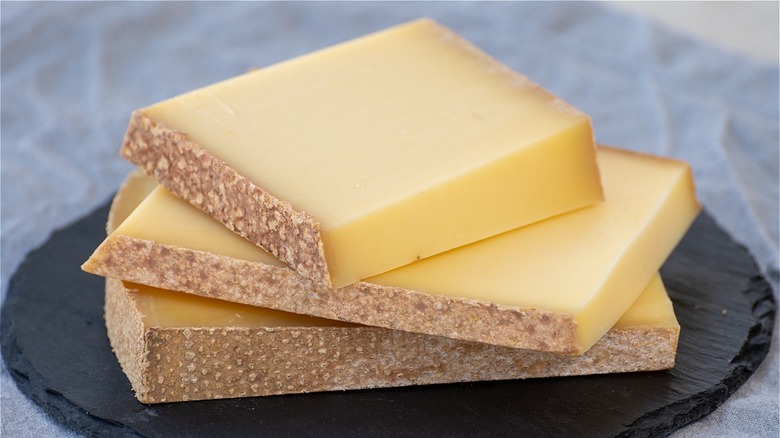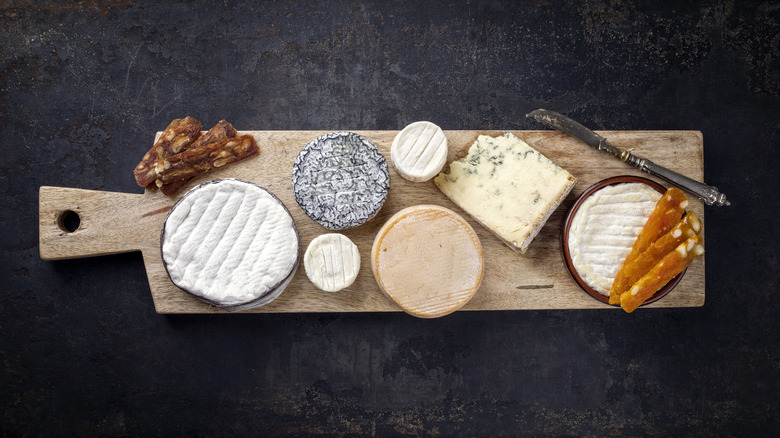Here's Exactly Which Cheese Rinds You Should And Shouldn't Eat
It's not difficult to see why cheese boards have risen in popularity in recent years. Business Insider reports that the trend has garnered social media popularity among millennials, with some food influencers earning thousands of followers thanks to about building charcuterie boards. The phenomena has even gone so far as to attract attention from influencers including "Board Lord" Jared Fried, who's on a constant quest to critique cheese boards and maintain high cheesy standards.
While millennials and the like have no problem devouring whatever cheese is placed in front of them, they've started to develop more discerning palates. And part of those discerning tastes includes checking whether a cheese rind is edible.
Which cheeses are the absolute best may be subjective, but there are a few rules to follow when it comes to rinds, per Wisconsin Cheeses. Some of them are flavored, while some are better left on the board.
How do you know which rinds to write off?
According to Dairy Farmers of Wisconsin's Education Manager, Molly Browne, not all cheese rinds are made equally. So, which rinds should cheese lovers stay away from? Browne says anything made from wax, cloth, or bark is a no-go. This includes many forms of gouda and some cheddars, often referred to as clothbound cheddars.
But while you shouldn't eat a wax rind, Browne says the other rinds are really "a matter of personal preference." And if you do attempt to enjoy the rind, Browne recommends bringing it to room temperature or warming it. "A room temperature brie, or a baked brie, is going to show more robust flavors and aromas than one that is served cold," she explains. "The rind itself is already a very concentrated zone of flavor and aroma, and the warmer the cheese gets, the more pronounced those flavors and aromas become."
Some ways Browne has seen cheese rinds utilized includes everything from "steeping gouda rinds in cream to make ice cream to marinating various hard rinds in olive oil for 30 days," or roasting Parmesan rinds to make chips or croutons. If it's cloth, bark, or wax, don't look back — but anything beyond, and you can get your rind on.

